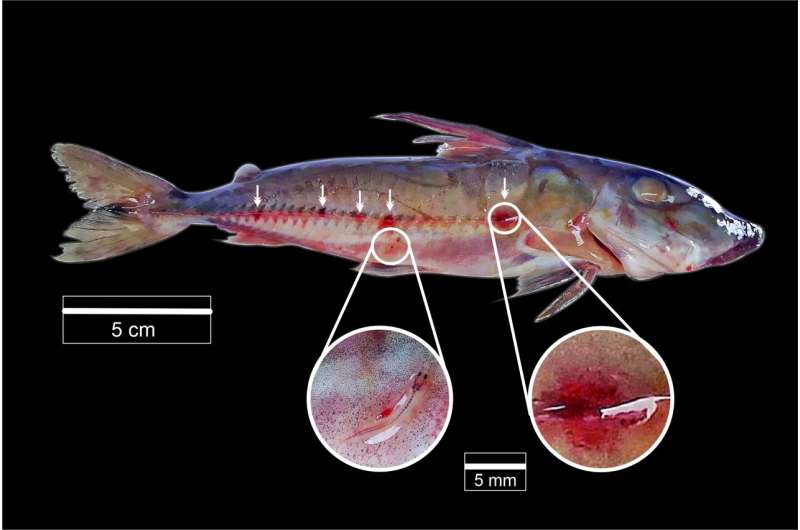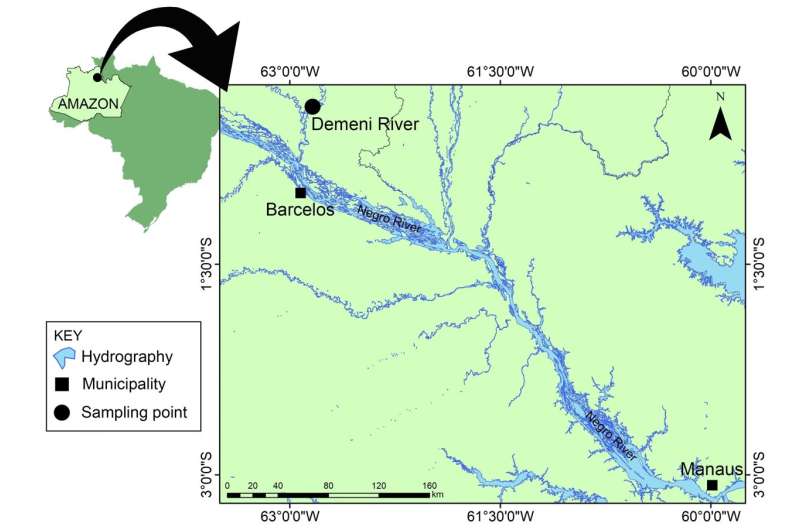September 21, 2021 report
Vampire fish could be hitching rides from larger hosts

A team of researchers with Universidade Federal do Amazonas, Universidade Federal do Rio Grande and Washington and Lee University has found evidence of candiru (aka vampire fish) attaching themselves to hosts but not feeding off of them. The team has published findings in Acta Ichthyologica et Piscatoria.
Vampire fish living in the waters of the Amazon River Basin swim into the gills of larger fish and attach themselves, where they then feed off their host's blood. They have also become known internationally due to sensational reports of them swimming up the urine streams of humans relieving themselves into a river and taking up internal residence.
In this new effort, the researchers have found evidence of one species of vampire fish hitching a ride on a much larger host fish for as yet unknown reasons.
As part of a general research effort, the researchers were tossing nets into a lake that is part of the Amazon River Basin. They discovered one or more candirus had attached themselves to a thorny catfish (Doras phlyzakion). But they had not attached in the gills, which the reserchers found unusual.
As they continued tallying the fish they had caught in the net, they found 20 candirus attached to nine of the same species of catfish. Intrigued, they brought all the specimens back to their lab for a closer look. After dissecting the candiru, they found that all of them had empty bellies—they had not been feeding off their hosts.

This find led the researchers to suggest other reasons for the tiny fish to attach themselves to the much larger fish. They found plausible the idea of the little fish attaching to much larger fish to travel to remote destinations. The candirus were all approximately 1 inch long, which meant that they would have had to exert a lot of energy to swim great distances. They noted also that due to their nearly transparent bodies, the little fish would have been difficult for other predators to see as they were carried to distant locales.
More information: Chiara C. F. Lubich et al, A candiru, Paracanthopoma sp. (Siluriformes: Trichomycteridae), associated with a thorny catfish, Doras phlyzakion (Siluriformes: Doradidae), in a tributary of the middle Rio Negro, Brazilian Amazon, Acta Ichthyologica et Piscatoria (2021). DOI: 10.3897/aiep.51.64324
© 2021 Science X Network





















